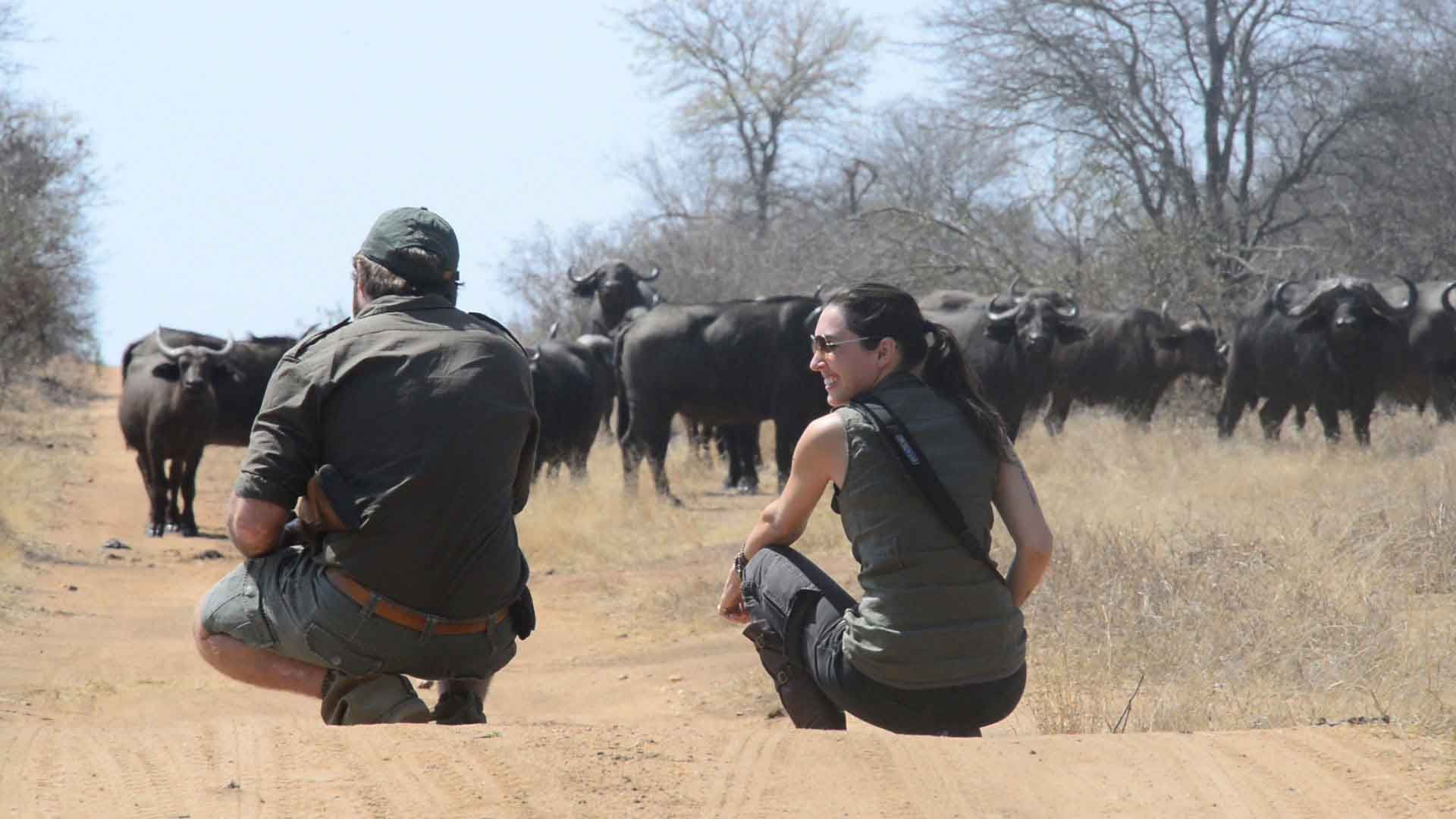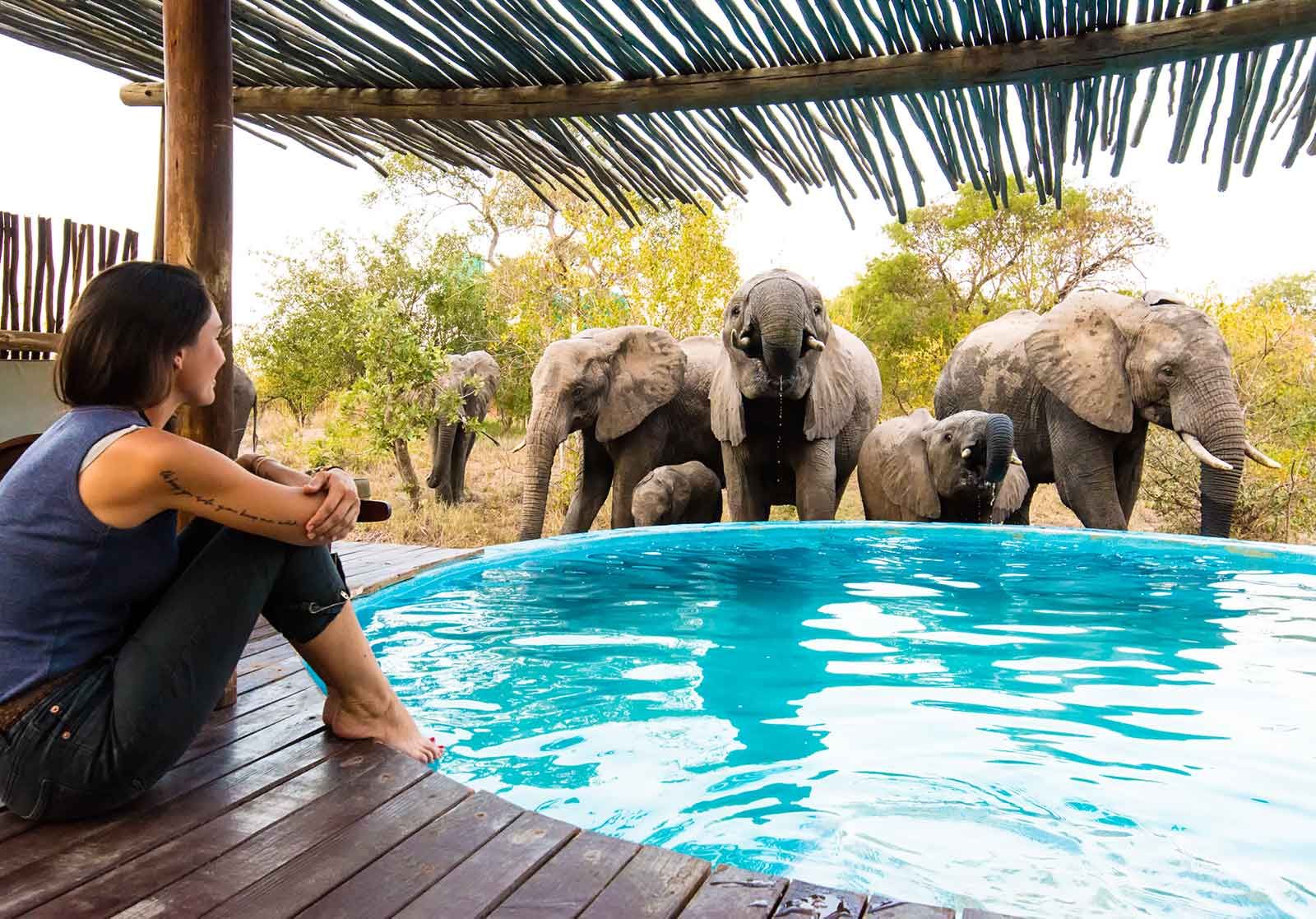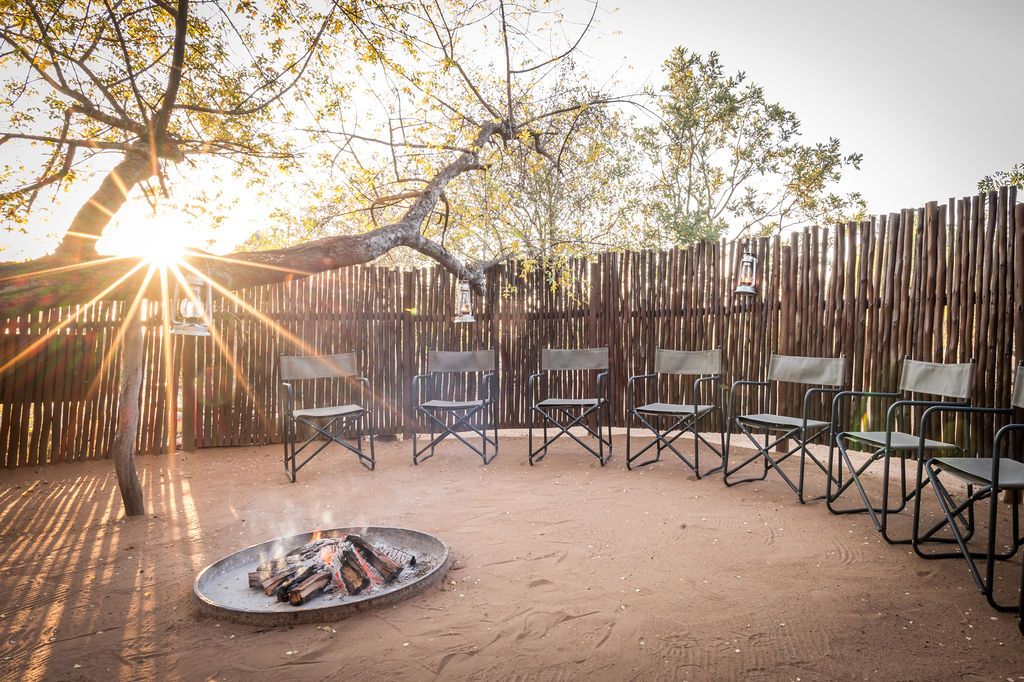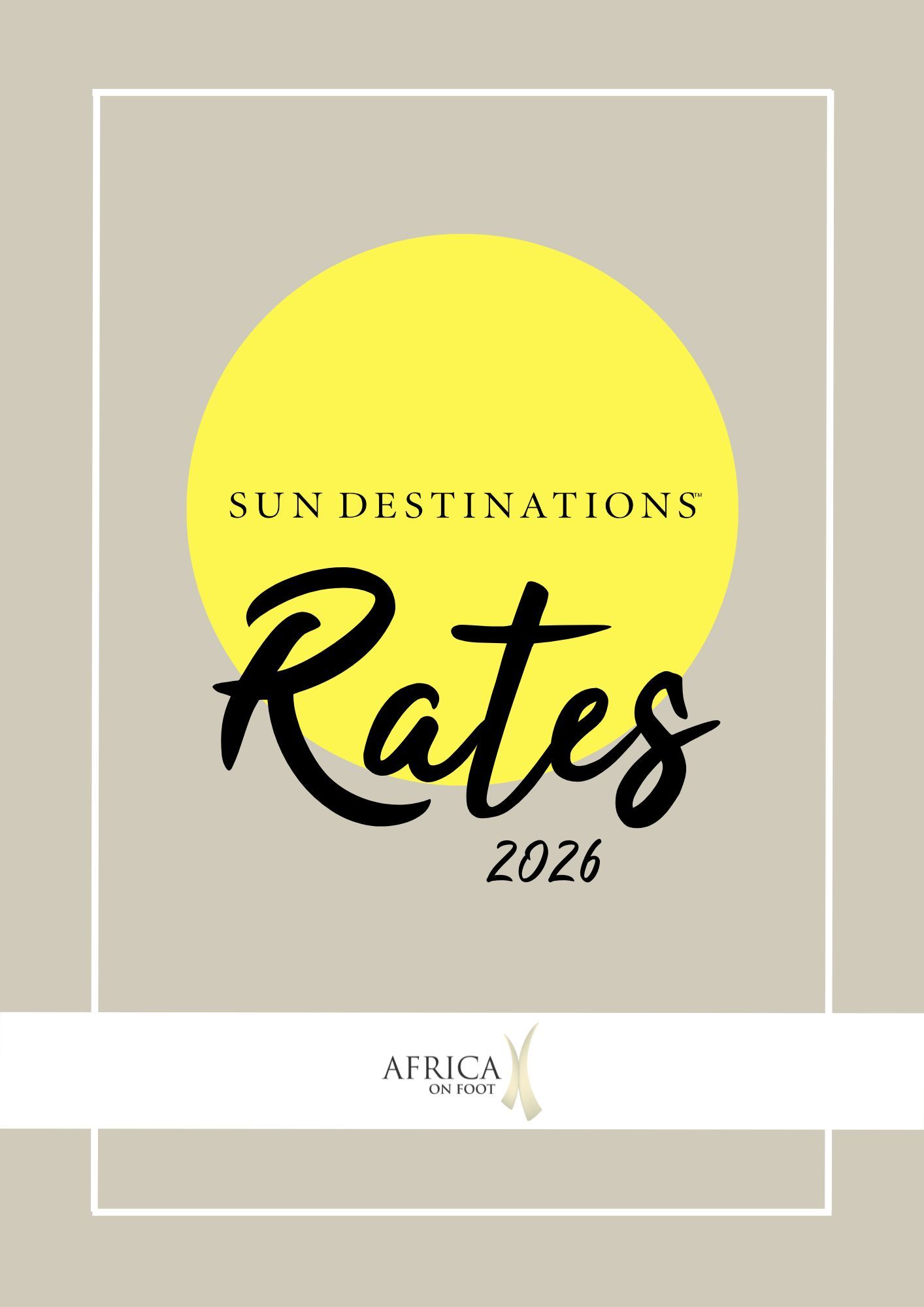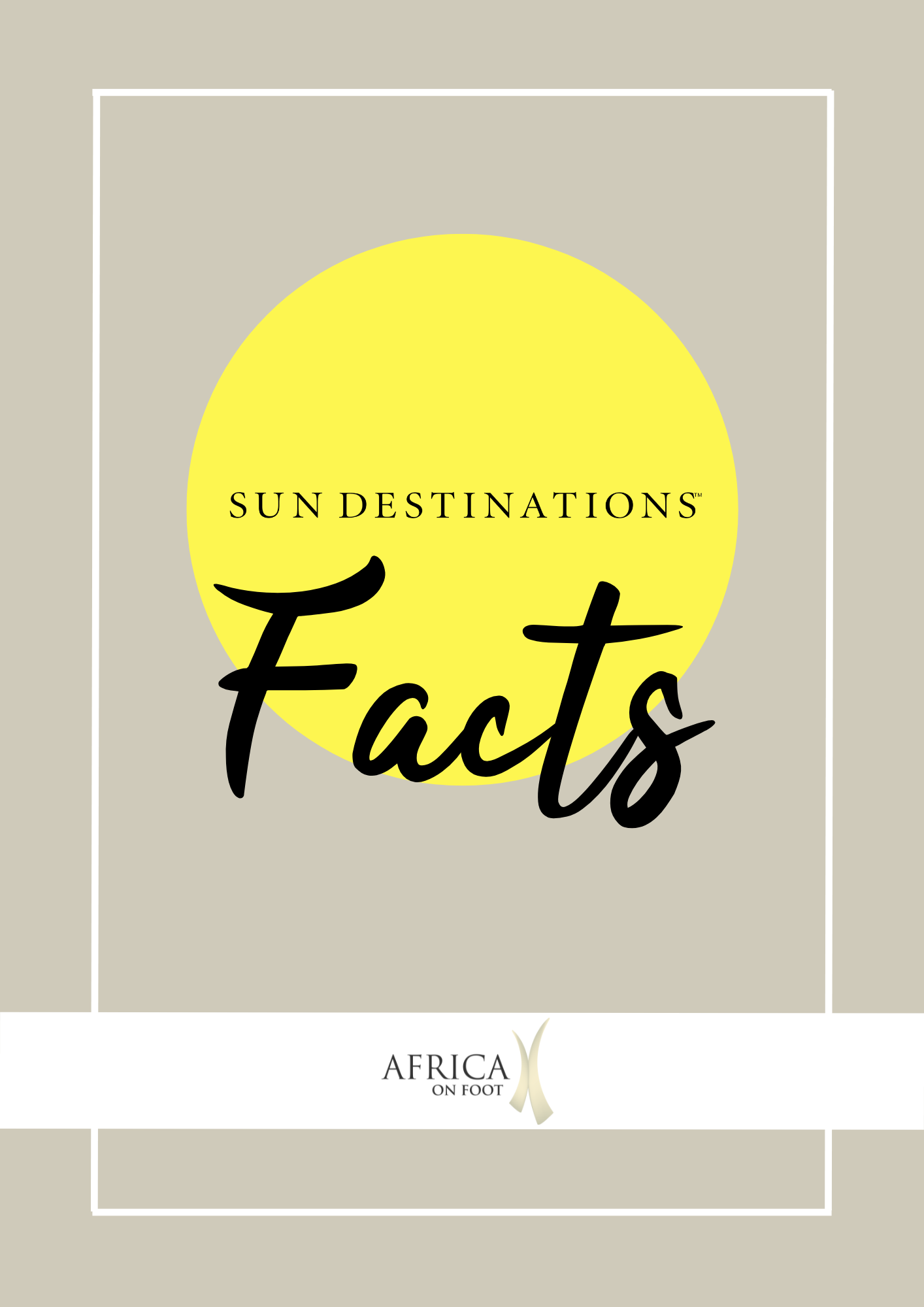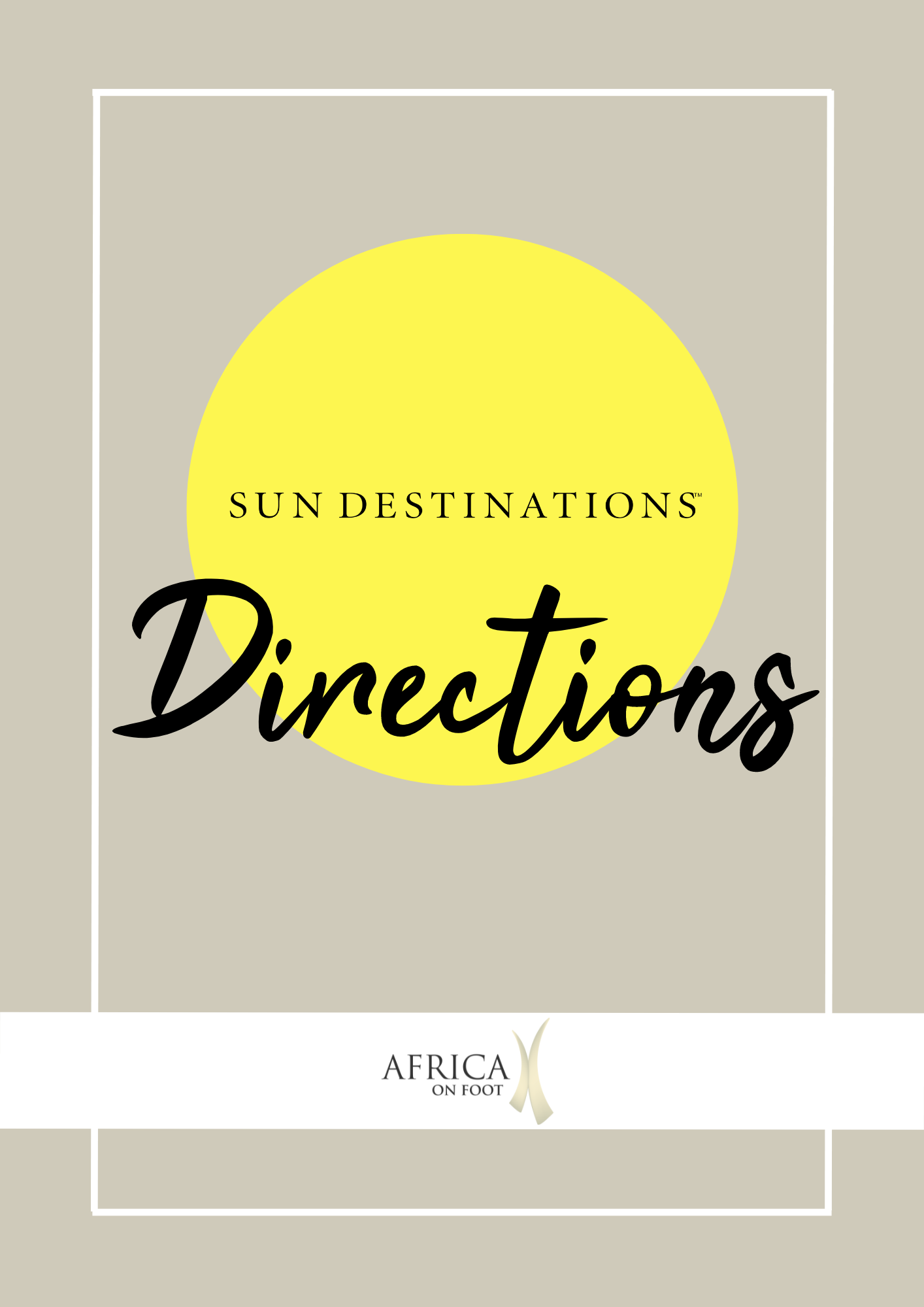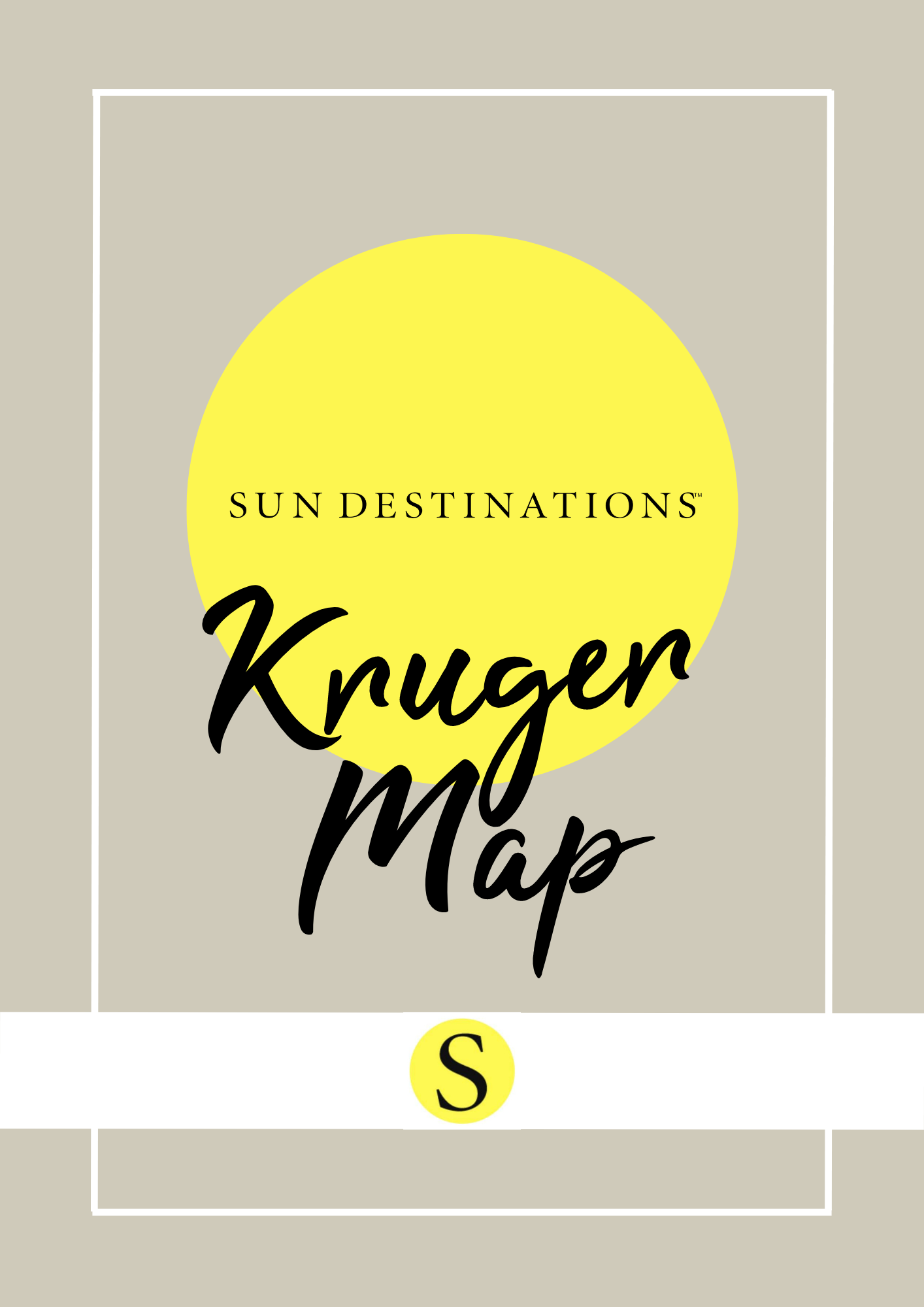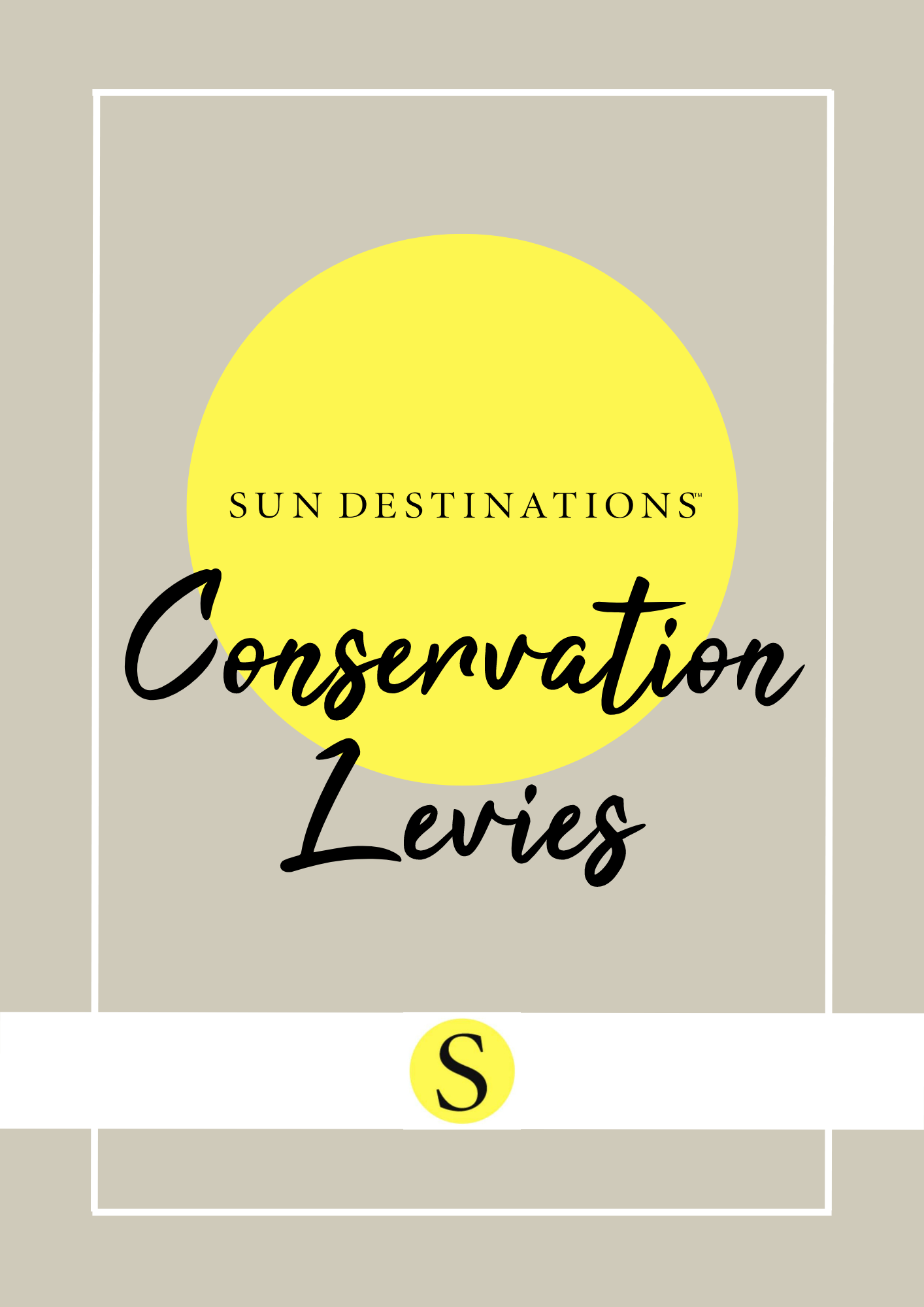Experience Safari in Unique Ways
Walking Safaris
Africa on Foot is a unique camp offering professional guided walking safaris with qualified trail guides who have experience in approaching wildlife. Walking safaris are 2-3 hours and begin with a safety briefing about bushveld etiquette and how to behave when encountering wildlife. If there are unsuitable weather conditions, a game drive will take place instead of a morning walk.
Game Drives with Sundowners
In the evenings, guests are taken on game drive, which brings you a lot closer to big game. The night drives also allow guests the opportunity to see the nocturnal animals not encountered during the day. And as the sun goes down, we say, "Cheers!" with a cold one.
Special Occasions
The team at Africa on Foot can tailor-make a special occasion for guests, provided it's pre-arranged. The Honeymoon Sundowner Experience is R500 per couple, but it is a complimentary experience for honeymooners. There is also the Bush Bar experience and bush breakfasts upon request.
UniqueSafari Experiences
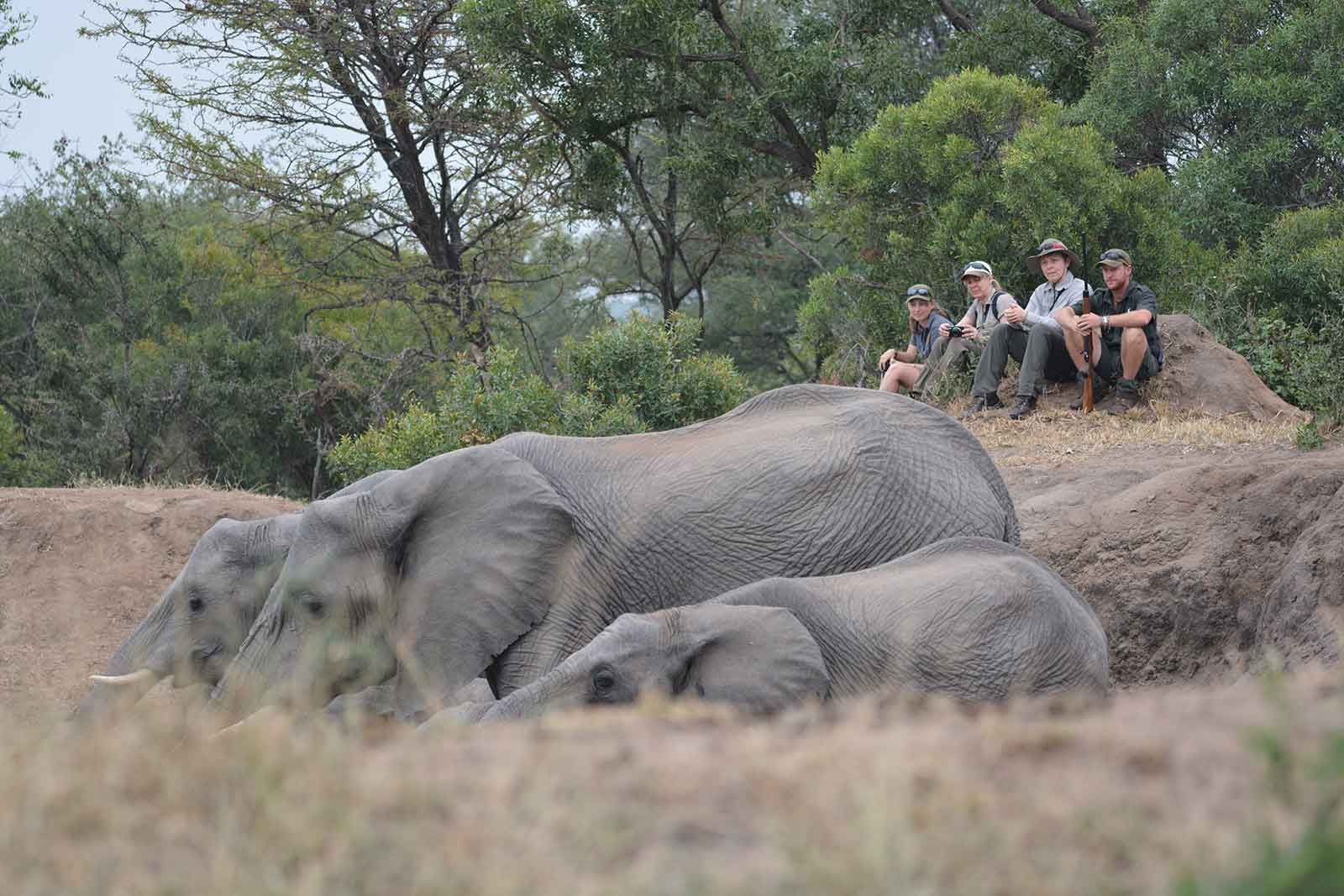
DetailsUseful info
The Kruger is a fantastic year-round safari destination that enjoys hot summers with rainfall and crisp, dry winters. The summer is from November to April and winter is from May - August.
During the rainy summer season, the landscapes shift to lush emerald green. During November/December is when impala give birth, making it ideal to spot young lambs. Summer is also the best season for birdwatching, as it draws in a wealth of summer migrants from across the globe. Expect full waterholes, rivers, and short bouts of rain with dramatic skylines.
The temperature in winter is warm. Evenings and early mornings are cool, and days are warm and dry. The bushveld thins out during winter, making it easy to spot big game. Because water is scarce, predators are attracted to the waterholes and dams; making it easy to track game.
During the summer months the weather can be hot and humid. Winter sees mild days and cold nights. Early morning game drives and night drives can be cool throughout the year, so you may want to bring a few things for every occasion.
These are a few essentials to bring on a safari to the Klaserie Private Nature Reserve:
- Comfortable, closed walking shoes
- Sunblock in the form of SPF lotion
- Hat and beanie
- Neutral-coloured clothing for when you are out on safari
- Light, airy clothing for midday heat
- Swimming costume
- Scarves and warm jackets for the winters (May to October)
- Outdoor tech gear (binoculars, cameras, phones, headlamp for around camp)
Africa on Foot is a relaxed and comfortable camp, where the focus is on providing a unique safari experience hosted by qualified guides and friendly staff. It is an intimate camp, so the experience is cozy and personal with the flexibility that can only be enjoyed at a small camp.
The walking safari is a specialised activity designed to give guests a more in-depth look at the bush they are traversing. The detail in the trees, tracks and smaller animals provide another dimension to a regular safari.
This is a camp that blends naturally into its surroundings and is constructed from a lot of wood, clay and thatch.
There's an unobtrusive, small elephant fence surrounding camp, which adds a level of safety to our child-friendly camp. Any number of the big five can wander around the periphery of camp, while nocturnal creatures like honey badgers, porcupines and hyenas are also regular visitors.
What you'll seeWildlife
Africa's most elite predators are found in the Klaserie and are frequently seen by guests on game drives. Knowing that there are all of Africa's most successful predators around Africa on Foot, the feeling of being in the wild is ever-present.
The Klaserie is known for its prolific big cat sightings, especially lions. The Klaserie lion pride dynamics are well documented. Other fantastic predators found here are leopard, spotted hyena, black-backed jackal, side-striped jackal, caracal, crocodile, cheetah, serval, and African wild dog, to name but a few.
The reserve is rich with prey, waterholes and den sites, making it a haven for lions and leopards.
The Klaserie Private Nature Reserve forms part of the Greater Kruger Park. The reserve shares unfenced borders with the Kruger National Park and is west of the Timbavati, covering 60 000 hectares on either side of the Klaserie River. This means there is a diversity of habitats and as a result, there is a species diversity to be enjoyed.
Mammals one can expect to see in the area include: elephant, rhino, buffalo, impala, kudu, zebra, giraffe, steenbok, duiker, mongoose, baboon, vervet monkey, hippo, warthog, and many others.
As is always the case on safari, you can never predict what you are going to see, but with such a variety of wildlife species, game drives at Africa on Foot always produce notable sightings.
The birdlife in the Klaserie is a mix of migrant and resident species. Commonly seen (and heard) birds at Africa on Foot are magpie shrike, lilac-breasted roller, yellow-billed hornbill, glossy starling, white-crowned shrike, blue waxbill, fork-tailed drongo, and francolin.
Some of the most superb raptor species are often seen soaring the skies and perching in trees surveying the land. Brown snake eagle, bateleur, martial eagle, African harrier hawk, African hawk eagle, dark chanting goshawk, black-chested snake eagle, Wahlberg’s eagle, and tawny eagle.
The Klaserie has some of the best viewing of white-backed vultures because it is a primary breeding area for these endangered birds. Circling carcasses in the Klaserie, guests can also expect to see lappet-faced, white-faced vultures, and hooded vultures.
Downloads
Find helpful information about rates, when to travel, wildlife you can expect to see and details about the accommodation.

